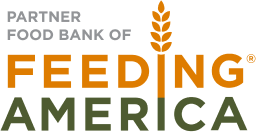MariAlexxa Holman, Direct Marketing Coordinator
October is here, which means the back-to-school season is in full swing, and for many parents, it’s a sigh of relief for school to start again. Some no longer have to worry about childcare or keeping them busy, while others grapple with more serious realities, like being able to provide 3 meals a day for their family. This is unfortunately not a singular or unique situation throughout our nation; a lot of parents rely on public schools to provide low to no cost meals to their children.
Over 35,000 children in the Miami Valley alone are experiencing food insecurity, and according to Feeding America, 505,430 children statewide are food insecure. This equates to 1 in 5 kids across Ohio. Free meals through school offer students the consistency of a guaranteed meal at school every day, which can make an incredible difference in their learning and growth.
So What Happens When a Child is Hungry?
Hunger is a hidden barrier that thousands of children in Ohio face when it comes to learning and development. Although it may not seem as severe on the surface, the effects of hunger in kids can be colossal. According to No Kid Hungry, even a short period of hunger for children can have lifelong impacts, such as mood disorders, vitamin and nutrient deficiencies, substance abuse, weight fluctuation, and more. The stress created by malnutrition also plays a role in childhood development. Living with hunger at an early age activates stress response in a very toxic way, leading to long term problems with stress management and other stress-related health problems for them, such as cardiovascular disease. Outwardly, a hungry student may show signs of moodiness, poor concentration, absenteeism, and behavioral issues along with academic struggles (source).
These long-term effects can change the course of a child’s life and development, especially if it is for an extended period. The previously mentioned consequences of hunger in school-age kids have the potential to compound, creating a cycle of adversity for the individual and ultimately making it difficult to crawl out of poverty. Not only that, but academic struggles due to hunger can impact the type of career one is able to obtain, further trapping them in the poverty cycle. Research tells us how impactful hunger is on a child, and the simple act of providing kids with a meal before class can change the outcome of their entire lives.
How it Works
The first school lunch program started in 1946. Although many things have changed since then, the general bipartisan consensus is that school-age food insecurity is a problem. Currently, all states except Alabama, Alaska, Arkansas, Florida, Georgia, and Idaho offer a free school meal program. In Ohio, there are several programs in place to fight childhood hunger. These include free or low-cost school breakfast, lunch, and meals during the summer. The Ohio Department of Education says,
“All children in households receiving benefits from the Supplemental Nutrition Assistance Program (SNAP) or Ohio Works First (OWF); foster children that are under the legal responsibility of a foster care agency or court; children participating in their school’s Head Start program; and children who meet the definition of homeless, runaway, or migrant are eligible for free meals. Also, your children may receive free or reduced-price meals if your household’s income is within the federal income eligibility guidelines limits.”
Depending on whether you are already enrolled in a government assistance program such as TANF, WIC or SNAP, you may need to apply for free meals. Students whose parents are already participating in those programs will automatically qualify. If you’d like to learn more about how to apply, you can do so here.
What is Ohio Doing to Help? And How Can I?
Right now, a new bill is being proposed: a law that would allow all students to have a meal, no matter their financial situation. House Bill 408 also proposes
- Regardless of whether a student owes money for earlier meals, they can request one
- It will not allow school districts to require a student to discard a meal after being served due to inability to pay.
- Schools will not be allowed to refuse a meal to a student as a form of disciplinary action.
- Publicly identify or stigmatize a student who cannot pay for a meal or who owes a meal debt.
If this bill passes, it will eliminate students feeling singled out while also providing everyone the opportunity for nourishment before class, ensuring that we are setting students up for success wherever we can.
In addition to this new bill, the Sun Meals program is a new development as of summer 2024. This is providing a way to reach children experiencing food insecurity all year around, not just during the school year. SUN Bucks, similar to SNAP, is a new grocery benefit available across most of the U.S. Families with eligible school-aged children can get $120 per child to buy groceries during the summer (source).
You have a couple different options if you want to support free school meals. The Ohio Department of Education and Workforce is requesting assistance identifying students eligible to receive access to summer meals (SUN Bucks); you can contact your local district and help schools collect lists of students eligible!
You can become a school meal sponsor. Sponsors can be financial sponsors, which purchase food from vendors and process reimbursements from the state agency. They can also be community sponsors, which provide meals after school or during the summer.
If you are a school in a low-income district, apply for Community Eligibility Provision (CEP)! Community Eligibility is a provision that helps schools and districts in high poverty communities meet eligibility to serve no-cost lunches and breakfasts to all their students.
Lastly, as an individual, you can stay informed on legislation and vote on policy effecting nutrition programs, like the Farm Bill, which funds SNAP and TEFAP.
The Foodbank’s Role
At The Foodbank, we have a program that offers students K-3rd Grade in public schools throughout our service area the opportunity to receive weekend meal kits to hold them over while they aren’t at school. Students who are identified as food insecure are provided with easy to open, nutritious meals and snacks each Friday before going home. Last school year, the Backpack Program had over 1,400 students enrolled. This year, two months into the school year, there are more than 1,700 students enrolled already.
Conclusion
School-age kids need to be given a fighting chance to thrive no matter their circumstances at home, and offering the consistency of a healthy meal daily is a simple and well-documented way to do just that. When a student is hungry, they can’t think about math or write an English paper– they have bigger problems than when homework is due, and blame does not belong on them for poor performance. Instead, meet them where they are with understanding, a plate of food, and patience. The lifelong effects of hunger and malnutrition are irrefutable, but there is hope moving forward as we continue to find new ways to fight hunger.





No comment yet, add your voice below!